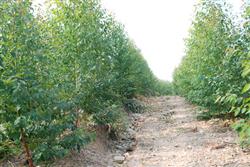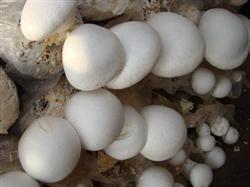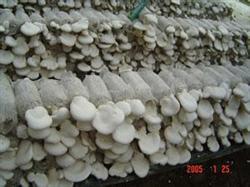Master the suitable growing area of Eucalyptus and strictly control the quality of seedlings

Eucalyptus is the leading tree species of fast-growing and high-yield forest in the world, which has the main advantages of fast growth, short rotation, good wood properties, wide use, strong applicability, good economic benefits and so on. It occupies an absolute advantage in the fast-growing and high-yield forest and pulpwood and fiber wood species in southern China. However, eucalyptus is an exotic tree species, and it also has some shortcomings such as not being cold-resistant and needing a lot of fertilizer and water. it has unique requirements for climate and geographical environment. Growers should rationally grasp its suitable growing area in order to achieve scientific cultivation. Wang Yiran, director of the Tree introduction and domestication Committee of the China Forestry Society, said that after eucalyptus was introduced from Australia to China, the reaction characters were different in different places. The land resources suitable for planting eucalyptus in China are very limited. According to the introduction of eucalyptus and geographical provenance experiments for many years, the cultivation area of eucalyptus plantation in China is roughly U-shaped, that is, the coastal areas of Zhejiang and Fujian in the east and Yunnan and Sichuan in the west. It can be extended northward to 30 degrees north latitude, while the central part is only to the south of Nanling. Planting eucalyptus outside this range is risky and may not survive or achieve the desired economic benefits. Therefore, for places that are not in suitable areas for eucalyptus, and places that do not have irrigation conditions, it is best not to introduce eucalyptus, otherwise the loss will outweigh the gain. Xie Yaojian, a researcher at the Eucalyptus Research and Development Center of the State Forestry Administration, believes that the first key problem in planting eucalyptus in the northern edge of the eucalyptus suitable area is cold and freezing injury, so the selected varieties must be cold-tolerant. The cold tolerance of eucalyptus is limited, and it must not be popularized to the north of the Yangtze River. For some places where eucalyptus has not been cultivated on a large scale in the past, introduction experiments and pilot cultivation experiments must be done before they can be popularized, otherwise there is a great risk. At present, the northern edge of eucalyptus planting in China is the hotter climate areas in Huaihua, Changde, Ganzhou, Chongqing, Sichuan and Guizhou. At present, all tropical eucalyptus trees have been afforested with clones, and the utilization rate of improved varieties is more than 90%. At present, cold-resistant eucalyptus afforestation is still mainly seed seedlings. For example, the seeds of Eucalyptus dunnei mainly rely on imports, and there are basically no seed orchards in China. Therefore, it is very important to keep a good source of imports, and we must import them from formal channels. Otherwise, it is difficult to guarantee the quality. In the technical link of eucalyptus seedling raising, light substrate has been used in foreign countries at present. The seedlings cultivated by this method have developed root system, light weight, low transportation cost and no need to remove bags, so the survival rate of afforestation is high. In addition, eucalyptus seedlings have basically achieved tissue culture factory, so that it can not be affected by the season, seedling quality and varieties remain stable, fewer diseases and insect pests. If eucalyptus planting areas still use traditional plastic bags to raise seedlings, it is obviously unable to meet the needs of the rapid development of the industry. When eucalyptus was first introduced into China, there were basically no diseases and insect pests. Now, with the large-scale planting of eucalyptus, diseases and insect pests such as quenching disease, white silk disease, brown spot, purple spot, canker, eucalyptus branch gall wasp and so on have appeared one after another. Therefore, the majority of eucalyptus growers must strictly check for diseases and insect pests in the allocation of eucalyptus seedlings.
- Prev

Skillfully using Corn Straw to cultivate Pleurotus ostreatus
Pleurotus ostreatus, also known as Pleurotus ostreatus, is a kind of large fleshy flat fungus with excellent quality, which is primitive and wild in arid grassland. after artificial cultivation, it is rich in protein, amino acid, glutamic acid and arginine. In addition, it is also rich in vitamin D and various mineral elements.
- Next

The proportion of raw materials for cultivation of Pleurotus ostreatus should be reasonable.
Bailing mushroom is a new mushroom developed in recent years, because the development history is relatively short, so there are still many problems in cultivation techniques, especially the total output has not been raised, and the biological conversion rate of some mushroom farmers is less than 20%. Even in the case of high price, the economic benefit is also very general. A pen.
Related
- Fuxing push coffee new agricultural production and marketing class: lack of small-scale processing plants
- Jujube rice field leisure farm deep ploughing Yilan for five years to create a space for organic food and play
- Nongyu Farm-A trial of organic papaya for brave women with advanced technology
- Four points for attention in the prevention and control of diseases and insect pests of edible fungi
- How to add nutrient solution to Edible Fungi
- Is there any good way to control edible fungus mites?
- Open Inoculation Technology of Edible Fungi
- Is there any clever way to use fertilizer for edible fungus in winter?
- What agents are used to kill the pathogens of edible fungi in the mushroom shed?
- Rapid drying of Edible Fungi

